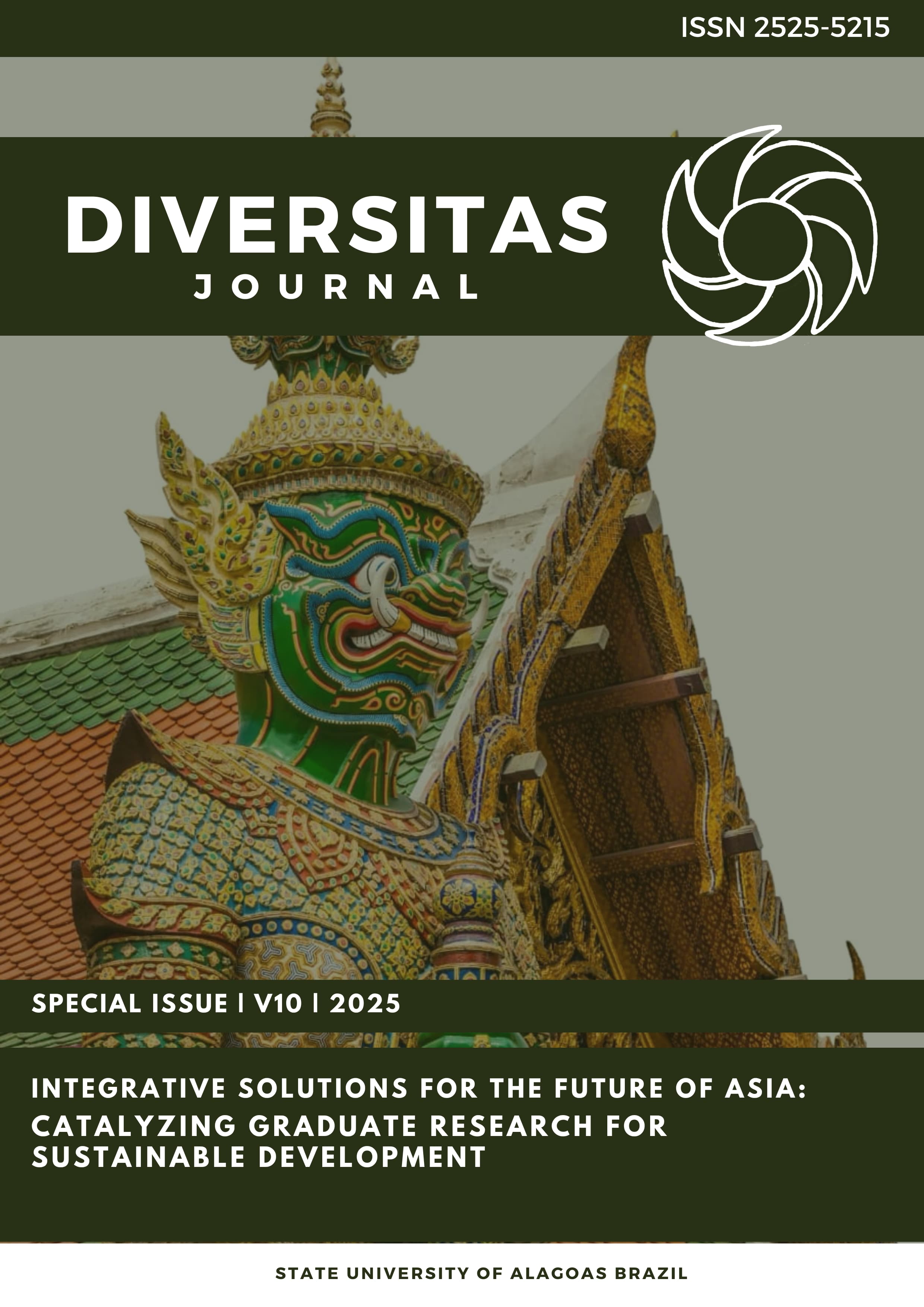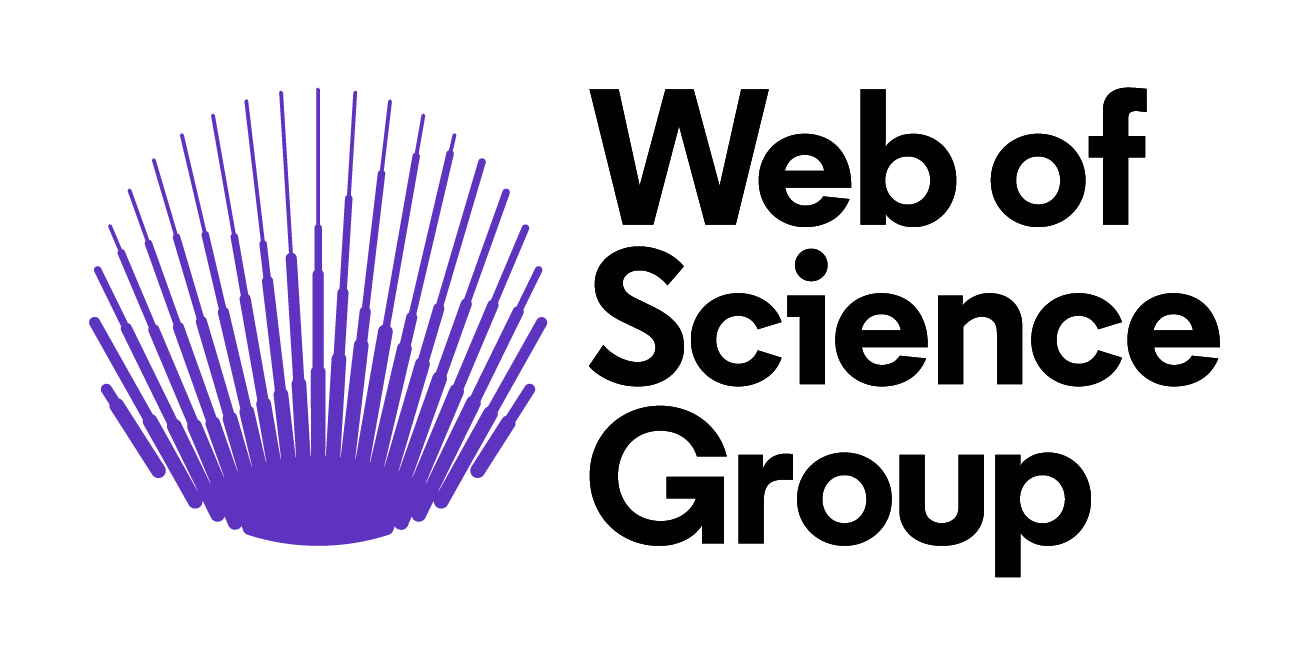Evaluating the Effectiveness of Compensation Systems on Employee Motivation and Retention in Auto Parts Enterprises in Wuhan, China: Basis For Human Resource Optimization Strategy
DOI:
https://doi.org/10.48017/dj.v10ispecial_1.3436Keywords:
compensation systems, employee motivation, employee retention, human resource optimization, auto parts industryAbstract
This study explores the effectiveness of compensation systems in enhancing employee motivation and retention within auto parts enterprises in Wuhan, China, aiming to provide a basis for human resource optimization strategies. Employing a quantitative-correlational research design, the study surveyed 379 employees from diverse demographic profiles and analyzed their perceptions of compensation systems, including monetary and non-monetary components such as benefits, career development opportunities, recognition, and equity. Findings revealed that compensation systems significantly influence employee motivation and retention, with monetary compensation, career development, and recognition being key factors. Notable differences were observed in the assessment of compensation effectiveness and motivation levels based on demographic variables, such as age, income, and tenure, underscoring the importance of tailored HR strategies. The study concludes with actionable recommendations for refining compensation practices, enhancing equity, and fostering professional growth to sustain workforce satisfaction and organizational competitiveness. Future research is recommended to examine longitudinal effects and cross-industry comparisons to broaden the understanding of compensation dynamics.
Metrics
References
Adams, J. S. (1963). Toward an understanding of inequity. Journal of Abnormal and Social Psychology, 67(5), 422-436. doi:10.1037/h0040968
Aguinis, H. (2019). Performance management for dummies. John Wiley & Sons.
Albrecht, S. L., Bakker, A. B., Gruman, J. A., Macey, W. H., & Saks, A. M. (2019). Employee engagement, human resource management practices and competitive advantage. Journal of Organizational Effectiveness: People and Performance, 6(2), 141-160. doi:10.1108/JOEPP-01-2019-0001
Alfes, K., Shantz, A., & Bailey, C. (2020). Enhancing HRM systems for employee proactivity and creativity: The role of work design. Human Resource Management Review, 30(3), 100703. doi:10.1016/j.hrmr.2019.100703
Bethel Automotive Safety Systems Co. Ltd. Retrieved from Bethel Auto: http://www.bethel-auto.com/
Boselie, P., Brewster, C., & Paauwe, J. (2020). Employee management in Europe: A review. International Journal of Human Resource Management, 31(2), 165-199. doi:10.1080/09585192.2019.1674303
Boxall, P., & Macky, K. (2019). High-involvement work processes, work intensification and employee well-being. Work, Employment and Society, 33(2), 297-313. doi:10.1177/0950017018824829
Breaugh, J. A. (2013). Employee recruitment. Annual Review of Psychology, 64, 389-416. doi:10.1146/annurev-psych-113011-143757
Changzhou Xingyu Automotive Lighting Systems Co., Ltd. Retrieved from Xingyu Lighting: http://www.xylighting.com/
Chen, X., & Huang, R. (2020). Compensation system equity and employee turnover: A meta-analytical review. International Journal of Human Resource Management, 31(4), 573-598. https://doi.org/10.1080/09585192.2020.1737162
Chen, Y., & Huang, Q. (2020). Challenges and strategies in human resource management in China’s auto parts industry. International Journal of Human Resource Management, 31(10), 1253-1272. doi:10.1080/09585192.2019.1567489
Chen, Y., Liu, H., & Xu, W. (2020). Job satisfaction and intrinsic motivation in the automotive industry. Journal of Industrial Relations, 62(1), 67-82. doi:10.1177/0022185620932329
Chen, Y., Wu, L., & Wang, H. (2022). Government policies and the development of the auto industry in Wuhan. Journal of Chinese Economic and Business Studies, 20(1), 45-60. doi:10.1080/14765284.2022.1956789
Conway, E., Fu, N., Monks, K., Alfes, K., & Bailey, C. (2020). Demands or resources? The relationship between HR practices, employee engagement, and emotional exhaustion within a hybrid model of employment relations. Human Resource Management, 59(1), 1-14. doi:10.1002/hrm.21981
Cooke, F. L., Dickmann, M., & Parry, E. (2021). COVID-19 and HRM: Emerging challenges and research opportunities. Journal of Business Research, 131, 232-237. doi:10.1016/j.jbusres.2020.09.018
Creswell, J. W. (2014). Research design: Qualitative, quantitative, and mixed methods approaches. Sage Publications. doi:10.4135/9781506326171
De Vos, A., & Meganck, A. (2020). What HR managers do versus what employees value: Exploring both parties' views on retention management from a psychological contract perspective. Personnel Review, 49(6), 1361-1380. doi:10.1108/PR-08-2019-0451
Deci, E. L., & Ryan, R. M. (1985). Intrinsic motivation and self-determination in human behavior. Springer Science & Business Media.
Deci, E. L., & Ryan, R. M. (1985). Intrinsic motivation and self-determination in human behavior. Springer Science & Business Media. https://doi.org/10.1007/978-1-4899-2271-7
Fang, H., & Liu, Y. (2023). Human resource management in China's auto parts industry: Challenges and strategies. Journal of Industrial Relations, 45(2), 123-136. doi:10.1177/00221856221123568
Farndale, E., & Sanders, K. (2021). Conceptualizing HRM system strength through a cross-cultural lens: A comparative study of three countries. International Journal of Human Resource Management, 32(3), 1-30. doi:10.1080/09585192.2019.1677266
Fuyao Glass Industry Group Co. Ltd. Retrieved from Fuyao Group: https://www.fuyaogroup.com/
Gagné, M., & Deci, E. L. (2005). Self-determination theory and work motivation. Journal of Organizational Behavior, 26(4), 331-362. doi:10.1002/job.322
Gerhart, B., & Fang, M. (2015). Pay, intrinsic motivation, extrinsic motivation, performance, and creativity in the workplace: Revisiting long-held beliefs. Annual Review of Organizational Psychology and Organizational Behavior, 2(1), 489-521. doi:10.1146/annurev-orgpsych-032414-111418
Gerhart, B., & Fang, M. (2015). Pay, intrinsic motivation, extrinsic motivation, performance, and creativity in the workplace. Journal of Organizational Behavior, 36(1), 19-32. https://doi.org/10.1002/job.1940
Greenhaus, J. H., & Powell, G. N. (2006). When work and family are allies: A theory of work-family enrichment. Academy of Management Review, 31(1), 72-92. https://doi.org/10.5465/amr.2006.19379625
Guest, D. E. (2021). The role of HR practices in employee engagement, organizational commitment, and employee performance. Human Resource Management Journal, 31(1), 2-11. doi:10.1111/1748-8583.12304
Gupta, N., & Shaw, J. D. (2014). Employee compensation: The neglected area of HRM research. Human Resource Management Review, 24(1), 1-4. https://doi.org/10.1016/j.hrmr.2013.08.007
Gupta, N., & Shaw, J. D. (2020). Gender equity in compensation systems: A meta-analysis. Human Resource Management Review, 30(3), 100721. https://doi.org/10.1016/j.hrmr.2020.100721
Harney, B., & Alkhalaf, H. (2021). The impact of HR practices on employee motivation and performance in the context of the COVID-19 pandemic. Human Resource Development International, 24(4), 394-411. doi:10.1080/13678868.2021.1925918
Herzberg, F. (1959). The motivation to work. New York: John Wiley & Sons.
Herzberg, F. (1966). Work and the Nature of Man. Cleveland: World Publishing Company.
HUAYU Automotive Systems Company Ltd. Retrieved from HUAYU Automotive: http://www.huayu-auto.com/
Jansen, P. G. W., & Yperen, N. W. (2022). The role of employee development and career growth in enhancing employee motivation and performance. Journal of Occupational and Organizational Psychology, 95(1), 125-142. doi:10.1111/joop.12352
Jehanzeb, K., & Bashir, N. A. (2013). Training and development program and its benefits to employee and organization: A conceptual study. European Journal of Business and Management, 5(2), 243-252.
Jiang, K., Lepak, D. P., Hu, J., & Baer, J. C. (2021). How does human resource management influence organizational outcomes? A meta-analytic investigation of mediating mechanisms. Academy of Management Journal, 54(6), 1264-1294. https://doi.org/10.5465/amj.2020.1035
Jiangsu Xinquan Automotive Trim Co., Ltd. Retrieved from Xinquan Auto: http://www.xinquanauto.com/
Kaufman, B. E. (2019). Theoretical perspectives on work and the employment relationship. Industrial and Labor Relations Review, 72(3), 529-549. doi:10.1177/0019793919828470
KEBODA TECHNOLOGY Co. Ltd. Retrieved from Keboda Technology: http://www.keboda.com/
Kim, K., Pathak, S., & Werner, S. (2019). When do employees' perception of HR practices influence their engagement? The interactive effects of line managers' HR implementation and HR climate. International Journal of Human Resource Management, 30(2), 1-23. doi:10.1080/09585192.2018.1443957
Kooij, D. T., De Lange, A. H., Jansen, P. G., Kanfer, R., & Dikkers, J. S. (2011). Age and work-related motives: A meta-analysis. Journal of Organizational Behavior, 32(2), 197-225. https://doi.org/10.1002/job.665
Kossek, E. E., Baltes, B. B., & Matthews, R. A. (2011). How work-family policies and practices affect work and family outcomes: A meta-analysis of correlational studies. Journal of Applied Psychology, 96(4), 797. doi:10.1037/a0024990
Kumar, R. (2019). Research methodology: A step-by-step guide for beginners (5th ed.). Sage Publications.
Lepak, D. P., & Snell, S. A. (2021). The strategic management of human capital: Determinants and outcomes of employee development and retention. Academy of Management Journal, 64(3), 718-742. doi:10.5465/amj.2019.1421
Li, J., & Zhang, W. (2022). Addressing turnover challenges in the auto parts industry: Insights from Wuhan. Human Resource Management Journal, 32(4), 567-584. doi:10.1111/1744-7941.12205
Li, P., Sun, Y., & Liu, Z. (2022). Workforce characteristics and HRM practices in Wuhan’s auto parts sector. Journal of Chinese Human Resources Management, 13(1), 45-60. doi:10.1108/JCHRM-07-2021-0049
Li, W., & Zhang, X. (2022). Addressing turnover challenges in the auto parts industry: Insights from Wuhan. Human Resource Management Journal, 32(4), 567-584. doi:10.1111/1744-7941.12205
Liu, X., Huang, Q., & He, J. (2021). Resilience of Wuhan’s auto industry during the COVID-19 pandemic. Industrial and Corporate Change, 30(3), 675-690. doi:10.1093/icc/dtab022
Locke, E. A. (1976). The nature and causes of job satisfaction. In M. D. Dunnette (Ed.), Handbook of industrial and organizational psychology (pp. 1297-1349). Chicago: Rand McNally.
Makarius, E. E., & Mukherjee, D. (2021). The future of remote work: Insights from managers and employees on the new normal. Journal of Business Research, 131, 585-593. doi:10.1016/j.jbusres.2020.10.060
Martin, G., & Gollan, P. J. (2020). Corporate governance and strategic human resource management in the context of economic crises. International Journal of Human Resource Management, 31(10), 1-25. doi:10.1080/09585192.2019.1635540
Maslow, A. H. (1943). A theory of human motivation. Psychological Review, 50(4), 370-396. doi:10.1037/h0054346
Meyer, J. P., & Allen, N. J. (1991). A three-component conceptualization of organizational commitment. Human Resource Management Review, 1(1), 61-89. doi:10.1016/1053-4822(91)90011-Z
Meyer, J. P., & Allen, N. J. (1991). A three-component conceptualization of organizational commitment. Human Resource Management Review, 1(1), 61-89. https://doi.org/10.1016/1053-4822(91)90011-Z
Milkovich, G. T., Newman, J. M., & Gerhart, B. (2013). Compensation (11th ed.). McGraw-Hill Education. https://doi.org/10.1080/09585192.2020.1737162
Ningbo Joyson Electronic Corp. Retrieved from Joyson Electronics: http://www.joyson.cn/
Ningbo Tuopu Group Co. Ltd. Retrieved from Tuopu Group: http://www.tuopu.com/
Nishii, L. H., & Wright, P. M. (2020). Variability within organizations: Implications for strategic human resource management. Journal of Management, 46(6), 1182-1209. doi:10.1177/0149206320908648
Pichler, F., & Wallace, C. (2019). What leads to subjective well-being? The role of social capital, social support, and HR practices. Social Indicators Research, 141(1), 133-156. doi:10.1007/s11205-018-1853-8
Porter, M. E. (2008). The Five Competitive Forces That Shape Strategy. Harvard Business Review, 86(1), 78-93. Retrieved from https://hbr.org/2008/01/the-five-competitive-forces-that-shape-strategy
Rabl, T., Jayasinghe, M., Gerhart, B., & Kuhlmann, T. (2020). A meta-analysis of the relationship between HRM practices and employee outcomes: Examining the role of HR attributions. Journal of Applied Psychology, 105(11), 1305-1335. doi:10.1037/apl0000486
Sailun Group Co. Ltd. Retrieved from Sailun Group: http://www.sailuntire.com/
Saks, A. M. (2006). Antecedents and consequences of employee engagement. Journal of Managerial Psychology, 21(7), 600-619. doi:10.1108/02683940610690169
Sekaran, U., & Bougie, R. (2016). Research methods for business: A skill-building approach. Wiley. doi:10.1111/j.1744-6570.1983.tb00310.x
Shandong Linglong Tyre Co. Ltd. Retrieved from Linglong Tyre: http://www.linglong.cn/
Singh, P., & Loncar, N. (2010). Pay satisfaction, job satisfaction, and turnover intent. Relations Industrielles/Industrial Relations, 65(3), 470-490. https://doi.org/10.7202/045892ar
Tianneng Battery Group Co. Ltd. Retrieved from Tianneng Group: http://www.tianneng.com/
Van De Voorde, K., & Beijer, S. (2021). The role of employee well-being in HRM-performance research: A critical review. Human Resource Management Review, 31(2), 100727. doi:10.1016/j.hrmr.2020.100727
Wang, T., & Chen, L. (2021). Recruitment strategies in the automotive sector: Evidence from Wuhan. Journal of Recruitment and Retention Studies, 7(2), 89-105. doi:10.1108/JRRS-04-2021-0023
Wang, T., & Zhang, L. (2020). The impact of technological advancements on the auto industry in Wuhan. Technology in Society, 62, 101302. doi:10.1016/j.techsoc.2020.101302
Wang, Y., & Xu, W. (2023). Talent management in the auto parts industry: Challenges and best practices. International Journal of Training and Development, 27(1), 23-39. doi:10.1111/ijtd.12205
Wei, F., Han, Y., & Hsu, I. (2019). Compensation and benefits and employee outcomes: Implications for strategic human resource management. International Journal of Human Resource Management, 30(6), 876-894. doi:10.1080/09585192.2017.1282535
Wei, L., Zhang, X., & Wang, Q. (2019). Effects of compensation fairness on employee retention. Journal of Business Research, 98, 87-96. https://doi.org/10.1016/j.jbusres.2019.03.015
Yang, M., & Xu, K. (2023). Leveraging technology for HRM in Wuhan’s auto parts enterprises. Human Resource Technology Journal, 11(1), 15-30. doi:10.1016/j.hrtj.2022.101322
Yang, M., & Xu, W. (2023). Innovation in electric and autonomous vehicles: The case
Zhang, J., Zhang, W., & Wang, H. (2022). The impact of compensation on employee motivation and retention: Evidence from the Chinese manufacturing sector. Asia Pacific Journal of Human Resources, 60(1), 67-88. doi:10.1111/1744-7941.12248
Zhang, Y., Yang, Z., & Li, Q. (2022). Career development opportunities and employee motivation in manufacturing: Evidence from China. Asia Pacific Journal of Management, 39(3), 123-137. https://doi.org/10.1007/s10490-021-09778-2
Zhao, Z., & Chen, Y. (2022). Economic contributions of the auto industry in Wuhan. Economic Development Quarterly, 36(2), 123-139. doi:10.1177/08912424211032568
Zhengzhou Coal Mining Machinery Group Company Ltd. Retrieved from Dun & Bradstreet: https://www.dnb.com/business-directory/company-profiles.zhengzhou_coal_mining_machinery_group_co_ltd.d0cbfa7cdb7a5b0e74198e1ae1502d03.html
Zhou, Q., & Gao, L. (2023). Future prospects of the auto industry in Wuhan: A strategic outlook. Foresight, 25(2), 133-148. doi:10.1108/FS-07-2022-0073
Downloads
Published
How to Cite
Issue
Section
License
Copyright (c) 2025 Yihui Li

This work is licensed under a Creative Commons Attribution 4.0 International License.
The Diversitas Journal expresses that the articles are the sole responsibility of the Authors, who are familiar with Brazilian and international legislation.
Articles are peer-reviewed and care should be taken to warn of the possible incidence of plagiarism. However, plagiarism is an indisputable action by the authors.
The violation of copyright is a crime, provided for in article 184 of the Brazilian Penal Code: “Art. 184 Violating copyright and related rights: Penalty - detention, from 3 (three) months to 1 (one) year, or fine. § 1 If the violation consists of total or partial reproduction, for the purpose of direct or indirect profit, by any means or process, of intellectual work, interpretation, performance or phonogram, without the express authorization of the author, the performer, the producer , as the case may be, or whoever represents them: Penalty - imprisonment, from 2 (two) to 4 (four) years, and a fine. ”


















